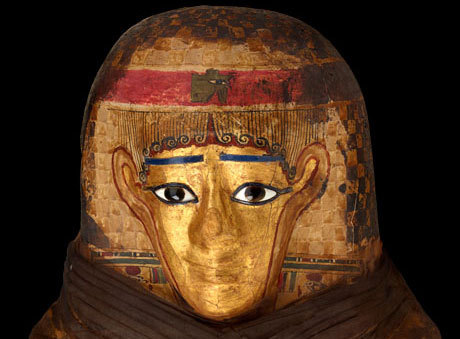In the popular imagination, mummies are associated with the royalty of Egyptian dynasties, but a new exhibit from the Field Museum in Chicago at the Natural History Museum in Los Angeles reveals the widespread practice of mummification not only in pre-dynastic Egypt, but also in pre-Incan Peru, where the mummification rituals and techniques were markedly different. "Many cultures throughout world history practiced mummification," said Richard Lariviere, President and CEO of the Field Museum, "but in Egyptian and Peruvian cultures, the practice was the oldest, most widespread and most ingenious."
This astounding and enlightening exhibit features mummies that are on tour for the first time since they were acquired by the Field Museum in the late 1890s. It reveals the importance of mummification rituals in the two cultures, and contrasts the different cultural markers and the role of the individual in each society. Using CT scans and 3-D printed casts of bones and burial objects, as well as forensically reconstructed sculptural busts, Field researchers have reconstructed burial rituals, mummification techniques and even the lives of each individual in much greater detail than would have been possible in the past.
Most intriguing are the Peruvian mummies, which are dated to 2,000 years prior to mummification practices in Egypt. In the coastal cultures of Peru, ordinary individuals were buried in chambers, mummified and preserved by the dry climate. The exhibit includes the mummy of a woman and her baby, both of whom likely died in childbirth. In contrast to the Egyptians, who sealed mummies in tombs, the early Peruvians would regularly visit the tombs to offer food and drink to relatives. All of this suggests the differing views of death and the afterlife.
The Egyptians not only mummified people, but also animals, including cats, baboons, gazelles and crocodiles, many of which were buried along with loved ones. These and other discoveries reveal the many dimensions of ancient cultures in a way that has never before been possible, due largely to advances in technology, which not only precisely date the mummies, but also can reveal everything from the individual's state of health, their age and other important characteristics. All done without disturbing the fragile mummies state of preservation.
Exquisitely curated and displayed, this joint venture of the Natural History Museum of L.A. County and the Field Museum provides a rich journey into a previously unexplored past. It is a treat that must not be missed.

